Shaker Inspired Cabinet Patterns
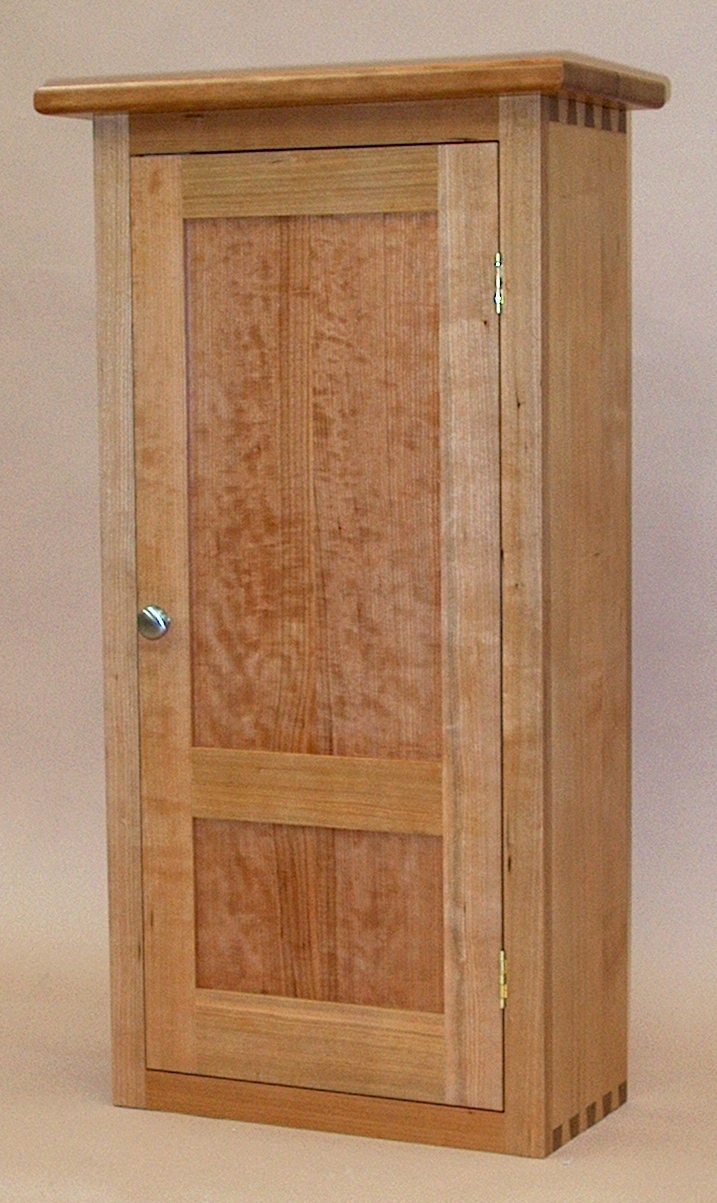
The Shaker philosophies and way of life did not make use of the wall cabinets we find so very useful and attractive. Looking through a number of books of Shaker furniture, only a few "cabinets" were found. They were relatively small, 13" H x 11" W to 34" H x 37" W, and intended to hang from peg rails.
With their large "families" and need for storage, the Shakers relied mainly on cupboards. These large pieces, often floor-to-ceiling, offered a number of drawers with additional storage above behind doors. The upper units of these cupboards serve as the guide for this collection of Shaker inspired cabinet patterns.
Each person might have their own favorite pattern. This collection is offered to show there is a rich variety in Shaker made furniture from which one can be inspired today.
The "typical kitchen cabinet" pattern shown below is best suited for sets of plywood cabinets made by large manufacturers and small cabinet shops. It is the most economical, and the lack of detail can be an advantage for side-by-side installations of quantities of cabinets.
The richer, more involved patterns are most attractive and effective when made of solid wood and include hand cut dovetails joining the cabinet sides, top and bottom. Such a cabinet becomes an accent or focal point in any room.
FRAMELESS AND FACE FRAME CABINET STYLES
Some vocabulary will be helpful when comparing various patterns. The following are line drawings of two very common cabinet designs - frameless and (full inset) face frame.
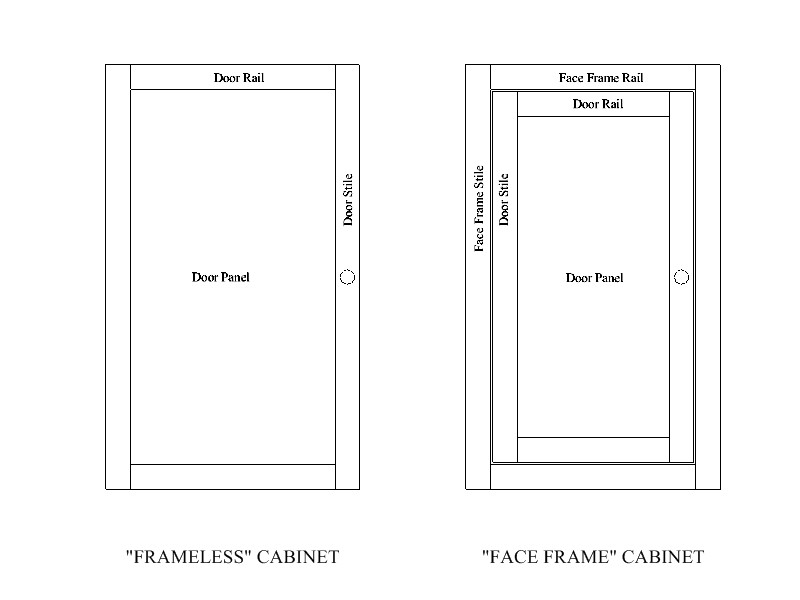
When a frameless cabinet is viewed from the front, only the door is visible - the cabinet sides, top, and bottom are entirely covered by the closed door. When the door is opened, the front edge of the cabinet sides, top, and bottom are seen.
Books of Shaker-made furniture seem to show only one or two Shaker-made frameless "cabinets" and apparently they only were made at Pleasant Hill, Kentucky.
In contrast, when a face frame cabinet is viewed from the front, the door is surrounded by a separate frame (attached to the sides, top and bottom of the cabinet). When the door is opened, the face remains in place.
A cabinet face frame and door frame share common elements: two vertical stiles and two horizontal rails. The stiles are full length, and the rails butt into the stiles.
Books of Shaker-made furniture show a number of cupboard upper units with full face frames around the doors, and some with stile-only face frames around the doors.
Almost every solid wood door is a frame and panel design, meaning the door consists of a frame with (in the above examples) a single panel. This design keeps the overall door width at a fairly constant dimension - the relatively narrow styles do not expand and shrink significantly with seasonal changes to ambient relative humidity. The panel is held in grooves that allow it to expand and shrink seasonally without affecting the overall width of the door.
The panels may be flat on both sides, or beveled on one or both sides. In the following sample patterns, the panels are all drawn flat simply for convenience.
Shaker woodworkers often added a longer and wider top to their cupboards. Some typical ` enhanced tops and bottoms are shown in the following sample patterns.
Some patterns might be more attractive with a rectangular cabinet shape, and some with a moe square shape. Each of the following sample patterns includes the same three heighth to width proportions.
TYPICAL MODERN SHAKER STYLE KITCHEN CABINETS
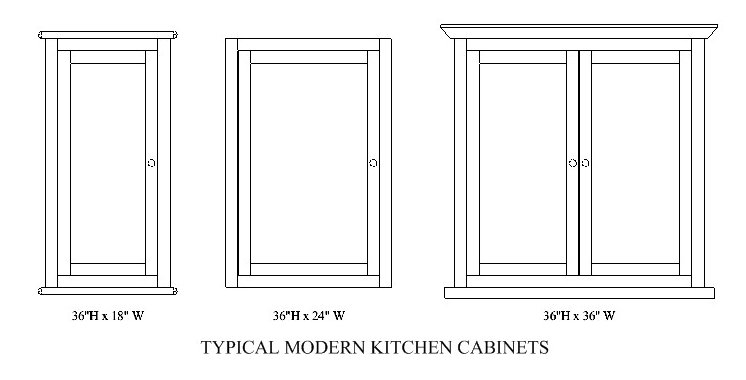
Manufacturing efficiencies are improved when face frame and door stiles and rails are all the same width. Some however may find the cabinets somewhat featureless.
WIDER DOOR STILES AND RAILS
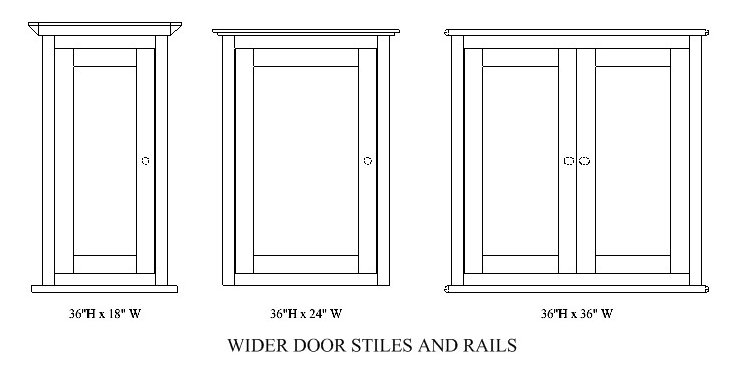
Widening the door's stiles and rails help it stand out from the face frame.
WIDER DOOR STILES AND RAILS WITH EVEN WIDER BOTTOM RAIL
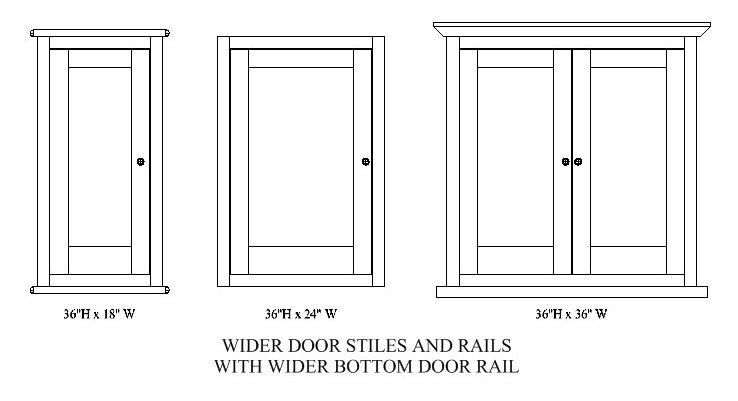
An even wider bottom rail gives extra weight and stature to the bottom of the cabinet. Scaling several photos suggested Shaker woodworkers on average made the bottom rail about 50% wider than the top rail and stiles.
GRADUATED INTERMEDIATE RAIL
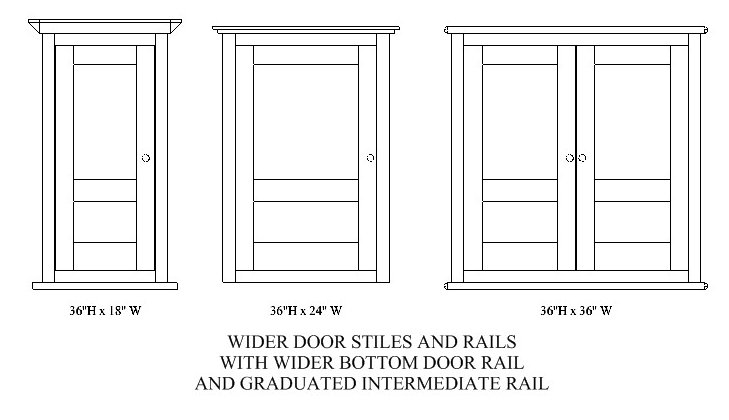
Depending on the ratio of height to width, a cabinet can be even more "grounded" with an intermediate rail. In these drawings, the intermediate rail width is the average of the top and bottom rail widths.
INTERMEDIATE STILE

An entirely different look results from using an intermediate stile instead of an intermediate rail. For certain ratios of height to width, there can be too many vertical lines.
INTERMEDIATE RAIL AND STILE
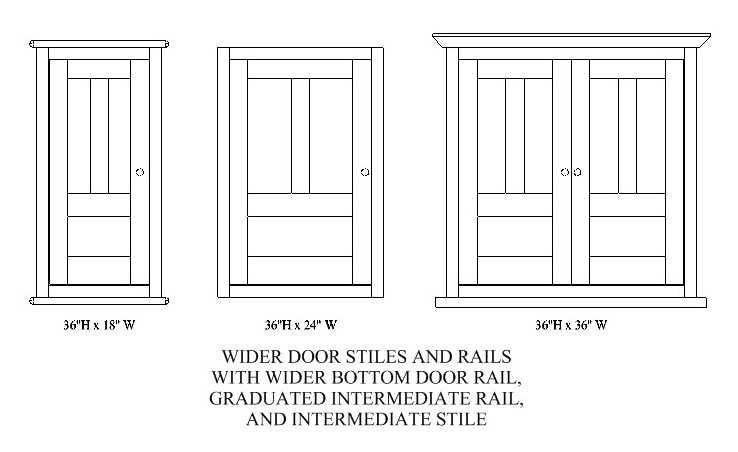
Yet another look is obtained by including both the intermediate rail and an intermediate stile above it. In small cabinets, the result can be rather busy, but in some situations one might find the extra lines more interesting.
CUPBOARD WIDE STILES NO RAILS FACE FRAME
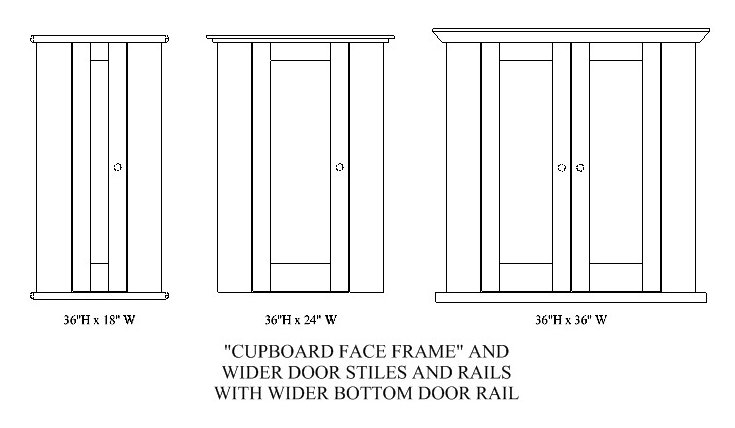
Many of the Shaker-made cupboards have an abbreviated face frame - stiles but no rails. The stiles are quite wide. On wider cupboards with side by side drawers and a pair of doors at the top, there is an additional wide face frame stile. The effect is to center the doors over the drawers and can be attractive. Of course, the wider face frame stiles make the inside storage less convenient to access.
Return to Design Guides page
Appointments are suggested for your convenience.